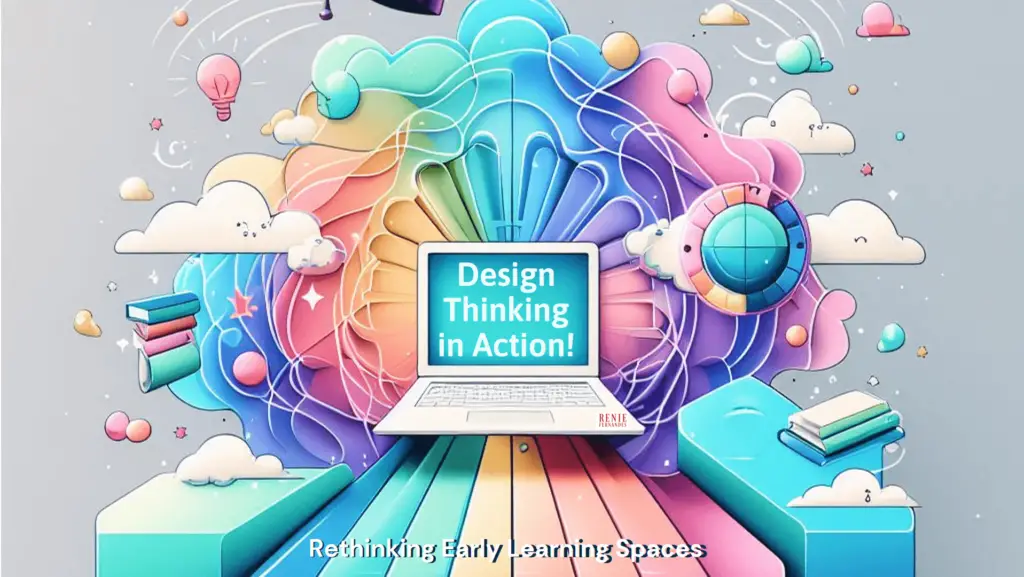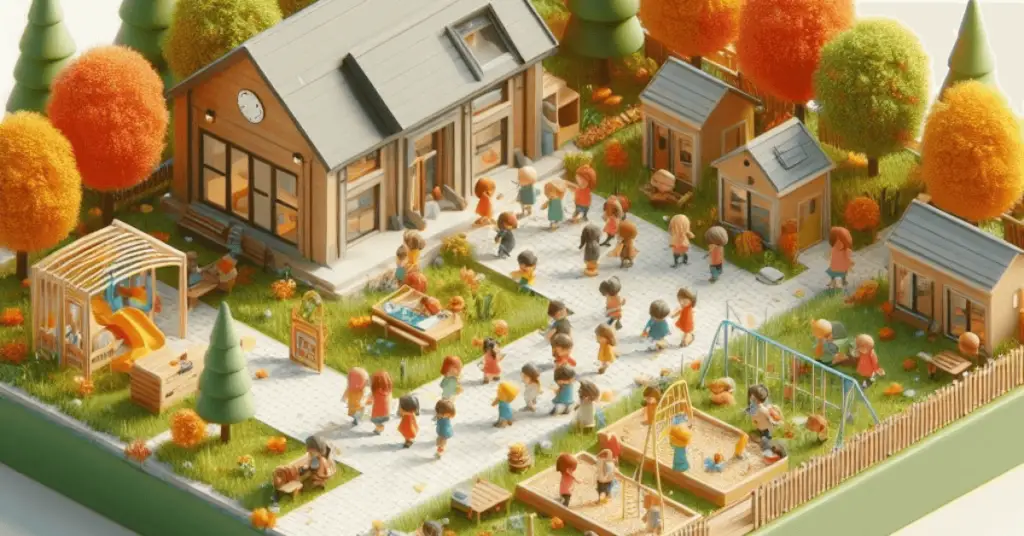Rethinking Early Learning Spaces: Design Thinking in Action!
Have you ever stepped into an early learning centre (ELC) and felt like it was just the same old chairs, tables, and a bit of artwork here and there? While working on these projects, I often receive feedback from clients asking to remove elements that might pose risk to kids or to eliminate design features completely to cut costs. Sometimes, we get so caught up in keeping kids safe or reducing costs that we end up designing the fun out of these spaces. It’s time to introduce Design Thinking into Early Learning Centers. Incredible design thinking in early learning centres can ignite curiosity and creativity in little ones. And it’s not just about bright colours and cute furniture!
For instance, an ELC might utilise Design Thinking to create a “messy play” zone with washable surfaces and easy-clean storage, catering to the needs of both educators and little Picassos! Design Thinking isn’t just about aesthetics; it also fosters innovation in safety. Imagine hidden storage units that double as climbing structures or walls with integrated climbing holds – all meeting safety regulations while encouraging physical development.
Design Thinking rejects the traditional
“Build it and they will come” approach.
Instead, it’s all about empathy!
Now let’s delve into the world of Design Thinking and Innovation in project management and uncover the secret sauce behind some of the most amazing learning spaces.
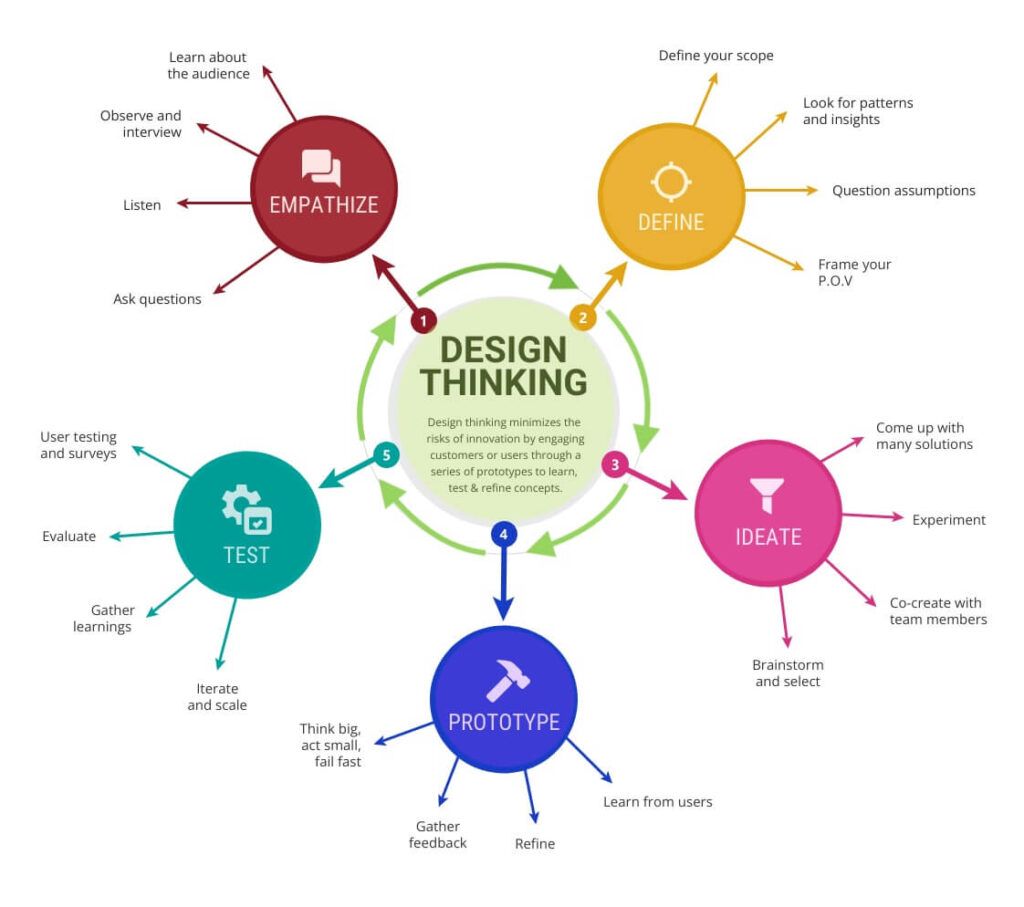
1. Empathise
Let’s put aside the blueprints for a bit. The first thing we need to do is, chat with teachers, parents, and, most importantly, the kids! Observe how the kids play, learn, and interact with their environment. This helps us understand their needs and wants.
2. Define
Based on our “empathy mission,” we need to define the core challenges. Is it a lack of flexible learning areas? Maybe limited storage for those overflowing art supplies? Is there a need to integrate technology to aid learning? Are there elements that we need to incorporate to inspire children to explore and learn?
3. Ideate
Here’s the fun part! Take your time for this one. We need to brainstorm wild ideas! Maybe a climbing wall disguised as a bookshelf? Or a light-up sensory floor? No idea is too crazy at this stage!
4. Prototype
Pick up the most promising ideas and build low-cost models. Think cardboard castles and duct tape forts! This lets us test with kids and see what works (and what ends up in a pile of happy destruction!). Another interesting way to test these prototypes is to get down on the ground and see the structures from a child’s perspective. This is another time-consuming phase, but totally worth it.
5. Test & Refine
Based on the feedback from our mini-architects, we need to refine the design. Maybe the climbing wall needs a slide, or the sensory floor gets a calming colour update.
Just like many other project management processes, this is also an iterative process that ensures the final design is not just functional but truly inspiring for our young learners.
Now let’s look at a few fascinating projects around the globe where Design Thinking in Early Learning Centers shines:
Goodstart Early Learning Centre, Brisbane, Australia
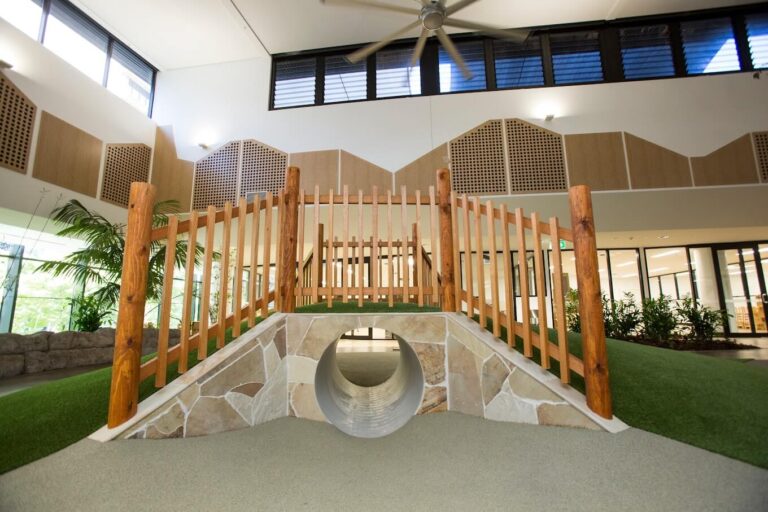
Located at the heart of Brisbane’s CBD, within a multi-storeyed building boasting a heritage-listed facade, constrained by structural limitations and active tenancies, the team at Gray Puksand embarked on a transformative journey to create a unique Goodstart ELC. Converting 3400 sqm of space into a tropical oasis themed childcare centre, the team engaged the principles of Biophilic design and employed Design Thinking in Early Learning Centers. Collaborating closely with stakeholders and delving deep into children’s play and learning patterns, they conceptualised an innovative space. This visionary design, featuring internal playgrounds with natural elements and equipment, offers children opportunities to engage all their senses and explore their surroundings. Recognised as a finalist in the 2018 Interior Design Excellence Awards (IDEA), this project stands as a testament to creativity and ingenuity in childcare centre design.
Ora, Dubai, UAE
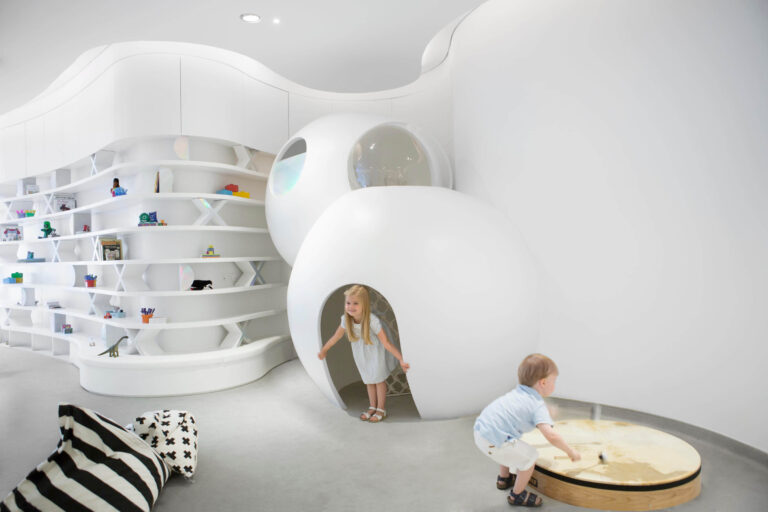
Nestled in Dubai’s Jumeirah region, Ora, known as the Nursery of the Future, is another classic example of using Design Thinking in Early Learning Centers. Drawing from the latest research from paediatric neuroscience, the design was informed by the understanding that the first three years in a child’s life are their formative years. The main stimulators in this early learning environment were to be the children and the educators, rather than loud-coloured walls commonly seen in ELCs. Using a neutral colour palette, along with the integration of child-safe technology into the floors and walls, the interiors are transformed into silent educators. Spaces are fluid and flexible, with walls that light up and display nature-inspired images or children’s artworks at the touch of a hand. Ora stands as a demonstration of the transformative potential of Design Thinking in revolutionising early learning environments.
YueCheng Courtyard Kindergarten, Beijing, China
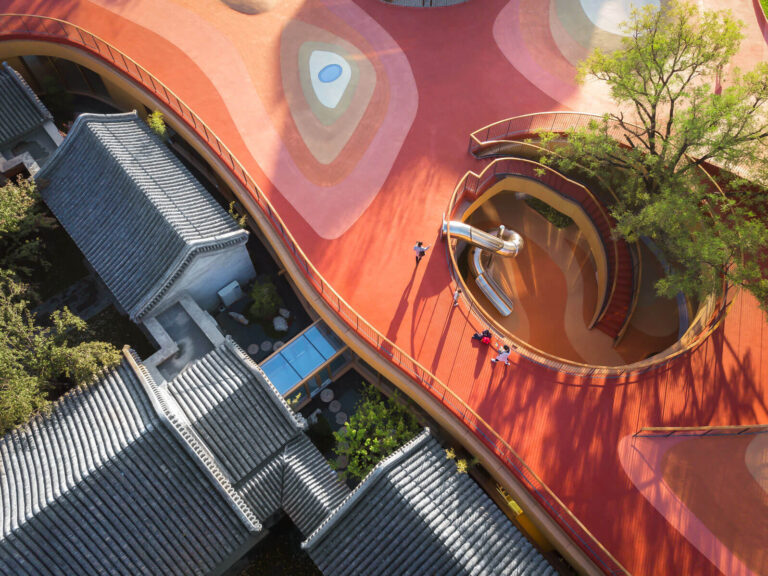
Another exemplary demonstration of Design Thinking in Early Learning Centers is the YueCheng Courtyard Kindergarten. Tasked with designing a kindergarten adjacent to the senior citizens’ apartments, MAD Architects embraced the client’s “intergenerational integration” ethos, blending preschool education and eldercare. The team brainstormed innovative solutions to ensure harmony between the old and new, focusing on both architectural and design aspects while addressing intergenerational cohesion. Nature takes centre stage here, in the design of this space, with the architecture revolving around it. The courtyard features elements of nature, the world, and human life intertwined to form the core of the architecture. The “borderless” learning space, ubiquitous reading environment, and curriculum emphasising exploratory play not only enhance children’s interactions but also create an optimal atmosphere for teaching and learning. Furthermore, the collaborative efforts result in fostering a sense of inclusiveness and shaping a community’s unique consensus and values.
Conclusion
Risks and costs are always going to be a part of every project, but, as professionals working with children, it’s crucial to embrace diverse design aspirations and project management principles when designing and delivering these spaces. These examples showcase the profound impact of Design Thinking and Innovation on Early Learning Centers (ELCs) worldwide. By prioritising empathy and creative problem-solving, we can craft spaces that inspire and nurture the potential of every child. Business leaders also need to recognise the transformative magic of Design Thinking – where empathy intertwines with innovation to create environments that cultivate and inspire the curiosity of future generations.

